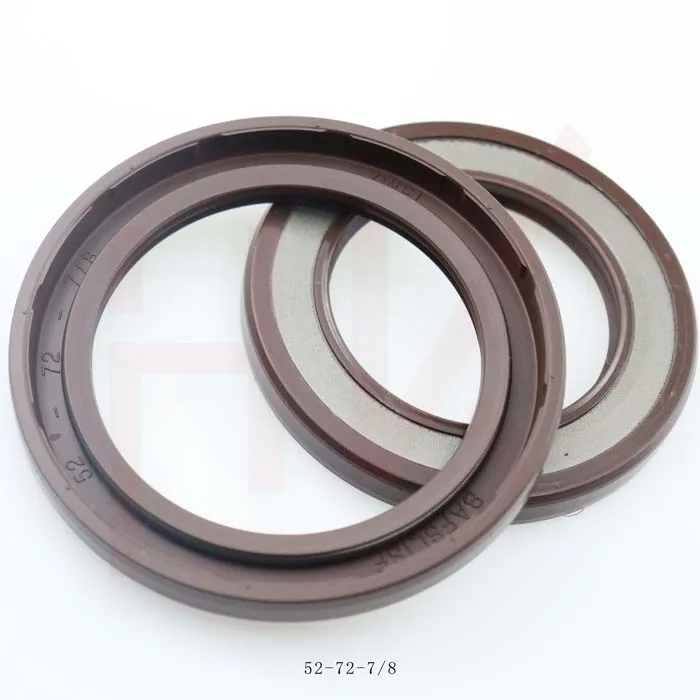Sep . 04, 2024 02:14 Back to list
hydraulic cylinder seal replacement
Hydraulic Cylinder Seal Replacement A Comprehensive Guide
Hydraulic cylinders play a crucial role in various machinery, from construction equipment to manufacturing tools. They rely on seals to maintain pressure and prevent fluid leaks. Over time, seals can wear out due to friction, temperature changes, and exposure to contaminants, leading to decreased performance and efficiency. Therefore, understanding the process of hydraulic cylinder seal replacement is essential for maintaining the health of your equipment.
Understanding the Basics
Hydraulic cylinders operate by converting hydraulic energy into mechanical force. The seals within the cylinder ensure that the hydraulic fluid remains contained, providing the necessary force for movement. Common types of seals used in hydraulic cylinders include rod seals, piston seals, and wiper seals. It’s essential to identify which seals need replacement during maintenance.
Signs of Worn Seals
Before delving into the replacement process, it's important to recognize the signs indicating that the seals need attention. Common indicators include
1. Visible Leaks Fluid pooling around the cylinder base or along the cylinder shaft indicates a failing seal. 2. Reduced Performance If the equipment struggles to lift or move loads, this could signal pressure loss due to bad seals. 3. Increased Noise Unusual sounds during operation often suggest internal issues, including seal failure.
Tools Required for Replacement
Before starting the seal replacement process, ensure you have the necessary tools
- Wrenches - Screwdrivers - Seal pullers - Cleaning rags - Hydraulic fluid - Replacement seals (matching the specifications of your hydraulic cylinder)
hydraulic cylinder seal replacement

Step-by-Step Seal Replacement Process
1. Preparation Safety is paramount. Ensure that the hydraulic system is depressurized. Disconnect any power sources, and wear protective gear to prevent injuries.
2. Disassembly Use wrenches to remove the hydraulic cylinder from the machinery. Carefully disassemble the cylinder components, paying close attention to the order of parts for reassembly.
3. Removing Old Seals Once disassembled, use seal pullers to gently remove the old seals from their grooves. Take care not to damage the cylinder surfaces as you do this.
4. Cleaning Clean the cylinder thoroughly, removing any debris, fluid residues, or old seal remnants. Use a suitable solvent and cloth, ensuring the rod and cylinder bore are free of contaminants.
5. Installing New Seals Align the new seals in their respective grooves and use a seal installation tool (if available) to fit them in place. Be cautious to avoid twisting or damaging the seals during installation.
6. Reassembly Once the new seals are securely in place, reassemble the hydraulic cylinder. Ensure all components are tightened to the manufacturer’s specifications.
7. Testing After reassembly, reconnect the hydraulic cylinder to the machinery. Slowly pressurize the system and inspect for any leaks. Test the equipment to ensure it operates efficiently.
Conclusion
Regular maintenance, including timely seal replacements, is vital for the longevity and efficiency of hydraulic cylinders. By recognizing the signs of seal wear and understanding the replacement process, operators can ensure that their machinery remains in optimal working condition. Investing time in proper maintenance practices not only prevents costly repairs but also enhances operational safety and performance. With this guide, you are better equipped to tackle hydraulic cylinder seal replacement and keep your equipment running smoothly.
-
Wiper Oil Seal: Our Commitment to Clean Hydraulics
NewsAug.13,2025
-
Hydraulic Oil Seal for Self Discharging Cars
NewsAug.13,2025
-
Hub Oil Seal for Agricultural Tractor Hubs
NewsAug.13,2025
-
Skeleton Oil Seal with NBR Material
NewsAug.13,2025
-
Rotary Lip Seal for High Pressure Applications
NewsAug.13,2025
-
Cylinder Seal Kits Our Legacy of Hydraulic Trust
NewsAug.13,2025
-
Unlocking the Potential of Hydraulic Systems with Essential Sealing Solutions
NewsAug.06,2025
Products categories
















